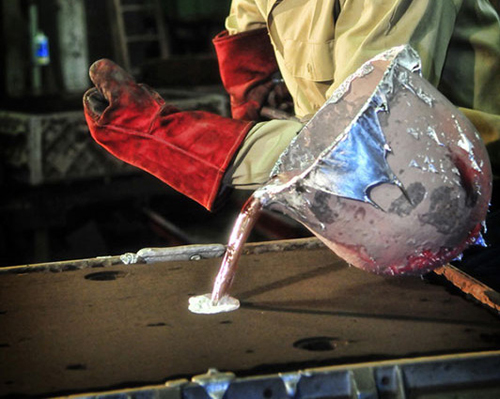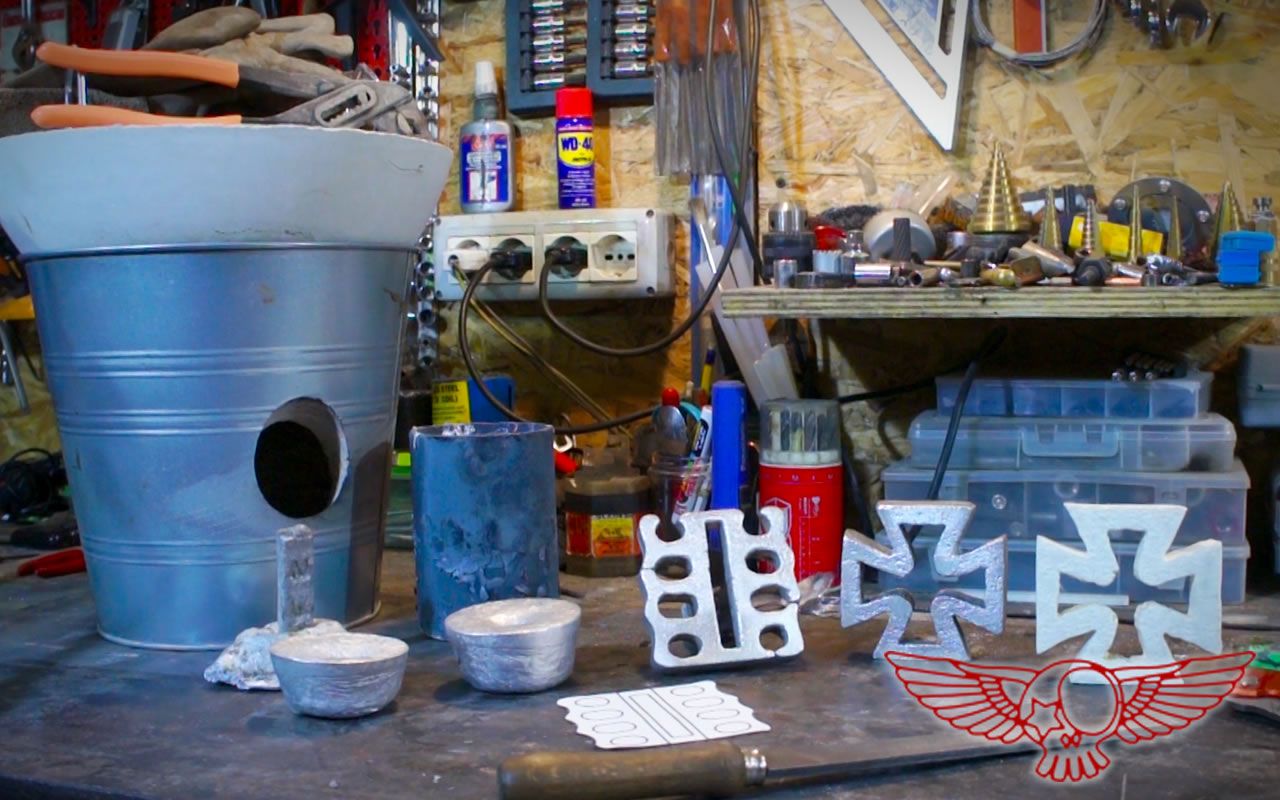Top 7 applications of Aluminum Foundry in cutting-edge industries
Everything About Aluminum Foundry: Secret Makes Use Of and Its Effect On Item Advancement
Aluminum foundries are necessary in contemporary production, particularly in industries such as auto and aerospace. They utilize innovative methods to create light-weight, resilient parts that enhance efficiency. The convenience of aluminum also lines up with sustainability initiatives, making it a recommended material. The continuous innovations in casting methods and their implications for item development raise important questions. What future developments might reshape the landscape of aluminum foundries and their applications?
Review of Aluminum Foundries
Aluminum foundries work as critical facilities in the metalworking sector, concentrating on the casting of aluminum and its alloys. These facilities make use of various techniques, including sand casting, die casting, and investment casting, to change raw aluminum right into useful forms. Each casting strategy supplies unique benefits, accommodating different job needs ranging from little parts to huge structural components.
The foundries run via a thorough process that begins with melting aluminum, adhered to by putting the molten steel right into mold and mildews. After cooling down, the castings go through finishing processes, which might include machining and surface area therapy to meet specific specs.
Quality assurance is vital, guaranteeing that the last products meet industry criteria and customer expectations. On top of that, aluminum foundries typically stress sustainability by recycling scrap aluminum, consequently lowering waste and saving sources. This dedication to effective manufacturing and environmental obligation placements aluminum foundries as essential factors to the production landscape.

Key Applications of Aluminum Castings
Aluminum castings offer essential functions in various industries, particularly in auto and aerospace markets. In the automotive industry, they add to light-weight frameworks and effective efficiency. Likewise, aerospace element manufacturing depends on aluminum castings for their stamina and rust resistance, important for high-performance applications.
Automotive Market Applications
In the automotive market, aluminum castings play a vital role in boosting lorry efficiency and efficiency. These castings are extensively utilized for elements such as engine blocks, transmission real estates, and suspension components. Their lightweight nature adds to reduced vehicle weight, which in turn enhances fuel economy and handling. Furthermore, aluminum's outstanding thermal conductivity enables reliable warmth dissipation, important for high-performance engines. The corrosion resistance of aluminum additionally prolongs the life-span of automobile elements, minimizing upkeep costs. Additionally, advancements in casting innovations make it possible for the production of complex forms, maximizing the design and performance of components. In general, aluminum castings are essential to modern automobile engineering, sustaining development and sustainability in vehicle layout.
Aerospace Component Manufacturing
The aerospace sector increasingly counts on aluminum castings for a variety of essential elements due to their useful residential or commercial properties. Lightweight yet solid, aluminum castings improve gas efficiency and total performance in aircraft style. Components such as engine mounts, architectural frameworks, and touchdown equipment are frequently generated utilizing aluminum casting techniques, making it possible for producers to attain complex geometries while preserving structural honesty. The high resistance to deterioration and thermal buildings of aluminum likewise add to the longevity and reliability of aerospace components. Additionally, improvements in casting modern technologies, such as precision casting and 3D printing, have broadened the capacities of aluminum in this industry. Inevitably, aluminum castings play a necessary function in conference stringent safety and security requirements and performance needs in modern aerospace applications.
Benefits of Utilizing Aluminum in Production
While numerous materials are readily available for production, aluminum stands out as a result of its unique combination of residential properties that improve performance and performance. One considerable benefit of aluminum is its lightweight nature, which contributes to lowered power consumption and enhanced fuel efficiency in various applications. Additionally, aluminum shows excellent deterioration resistance, prolonging the lifespan of products and decreasing upkeep costs. Its high thermal and electrical conductivity makes it suitable for heat exchangers and electrical components, while its pliability permits functional styles and detailed forms.
Moreover, aluminum is recyclable, promoting sustainability in manufacturing procedures. This reusability not only preserves resources yet also lowers the carbon footprint connected with manufacturing. The adaptability of aluminum to different alloys even more boosts its utility in diverse industries, from automotive to customer electronic devices. Collectively, these features make aluminum Visit Your URL an ideal option for manufacturers seeking to stabilize efficiency, cost-effectiveness, and ecological duty.
Advancements in Casting Techniques
Recent innovations in casting strategies have actually substantially changed the aluminum shop market. The integration of 3D printing technology has allowed a lot more intricate styles, while boosted alloy formulations improve performance and resilience. These advancements are driving efficiency and broadening the applications of aluminum in various markets.
3D Printing Integration

Boosted Alloy Formulations
Improvements in aluminum factory innovation have brought about the advancement of boosted alloy formulas that enhance casting efficiency and product properties. These innovative solutions often include components such as silicon, magnesium, and copper, which optimize strength, ductility, and deterioration resistance. By fine-tuning the compositions, producers can accomplish particular attributes tailored to varied applications, from automobile to aerospace industries. Furthermore, these boosted alloys help with better fluidity during the casting process, minimizing issues and improving surface area finish. Because of this, the effectiveness of production is significantly enhanced while keeping stringent top quality criteria. This development in alloy development not just simplifies manufacturing however also supports the production of lighter, stronger parts, eventually progressing item advancement and performance.
Influence on Aerospace and Automotive Industries
The noteworthy influence of aluminum foundries on the aerospace and automotive industries can not be overstated. Aluminum alloys, recognized for their lightweight and high stamina, have actually transformed the style and manufacturing procedures in both sectors. In aerospace, the decrease in weight straight correlates to sustain performance, permitting for longer trips and reduced exhausts. Elements such as airplane frameworks, wings, and engine parts benefit from aluminum's excellent exhaustion resistance and rust resistance.
In the auto sector, aluminum foundries add to the manufacturing of lighter vehicles, boosting efficiency and gas economic climate while meeting strict ecological guidelines. Making use of aluminum in engine blocks, body panels, and wheels why not try here has boosted significantly, driven by consumer demand for a lot more reliable lorries. Furthermore, developments in casting strategies have improved the accuracy and functionality of components, allowing makers to create more integrated and intricate layouts, therefore fostering advancements in both sectors.
Sustainability Practices in Aluminum Foundries
Aluminum foundries are progressively accepting sustainability techniques to reduce their environmental footprint while satisfying the expanding needs of the aerospace and automotive markets. These methods consist of the application of energy-efficient technologies, such as electric melting heating systems and advanced heat recuperation systems, which significantly reduced energy intake (Aluminum Foundry). In enhancement, lots of foundries are focusing on the use of recycled aluminum, which needs much less power and results in decreased greenhouse gas discharges contrasted to key aluminum manufacturing
Water conservation campaigns are likewise getting grip, with foundries using closed-loop systems to reduce water use and stop contamination. Additionally, waste management methods, including recycling scrap and lessening contaminated materials, add to a more lasting procedure. By taking on these techniques, aluminum foundries not just improve their competition but also align with global sustainability objectives, inevitably supporting a round economic climate and cultivating technology in eco-friendly manufacturing procedures.
Future Trends in Aluminum Casting Innovation
As the demand for light-weight and resilient materials proceeds to rise, advancements in casting technology are positioned to improve the aluminum industry. Advanced strategies such as 3D printing and automated casting procedures are obtaining grip, allowing for a lot more complicated geometries and decreased material waste. The combination of man-made intelligence and artificial intelligence is additionally boosting quality assurance and process optimization, lessening issues and enhancing performance.
Additionally, the advancement of new aluminum alloys is broadening the application range of cast products, making them suitable for markets from automobile to aerospace. Boosted recycling techniques are expected to better lower environmental influences, aligning with worldwide sustainability objectives.
Additionally, making use of smart sensing units in casting procedures is prepared for to allow real-time surveillance, making sure greater precision and consistency. These patterns indicate a transformative age in aluminum casting technology, making it possible for suppliers to satisfy progressing reference market demands while focusing on sustainability and technology.
Regularly Asked Concerns
How Is Aluminum Recycled After Usage in Products?
Aluminum recycling entails gathering, arranging, and melting used aluminum products (Aluminum Foundry). The liquified steel is after that cast into brand-new forms, lowering energy intake and protecting natural deposits, making it a reliable and lasting procedure for aluminum recovery
What Precaution Are Applied in Aluminum Foundries?
Security measures in aluminum foundries include proper air flow systems, personal safety devices, normal safety training, equipment upkeep methods, and emergency situation action plans, all aimed at reducing threats related to high temperatures and unsafe products throughout manufacturing.
How Do Aluminum Foundries Make Certain Quality Assurance?
Aluminum foundries execute rigorous quality assurance processes, including material inspections, temperature level surveillance, and dimensional checks. These procedures guarantee item uniformity, decrease issues, and stick to industry standards, eventually improving client satisfaction and functional efficiency.
What Are Typical Challenges Faced by Aluminum Foundries?
Aluminum foundries typically deal with difficulties such as keeping regular top quality, managing production costs, making sure timely distribution, dealing with tools maintenance, and adjusting to advancing market regulations. These factors can considerably influence overall functional efficiency and earnings.
Exactly How Does Aluminum Spreading Affect Product Weight?
Aluminum casting significantly minimizes product weight because of aluminum's reduced density contrasted to various other steels - Aluminum Foundry. This lightweight characteristic boosts design adaptability, boosts fuel performance in transportation applications, and provides advantages in different sectors needing weight-sensitive elements